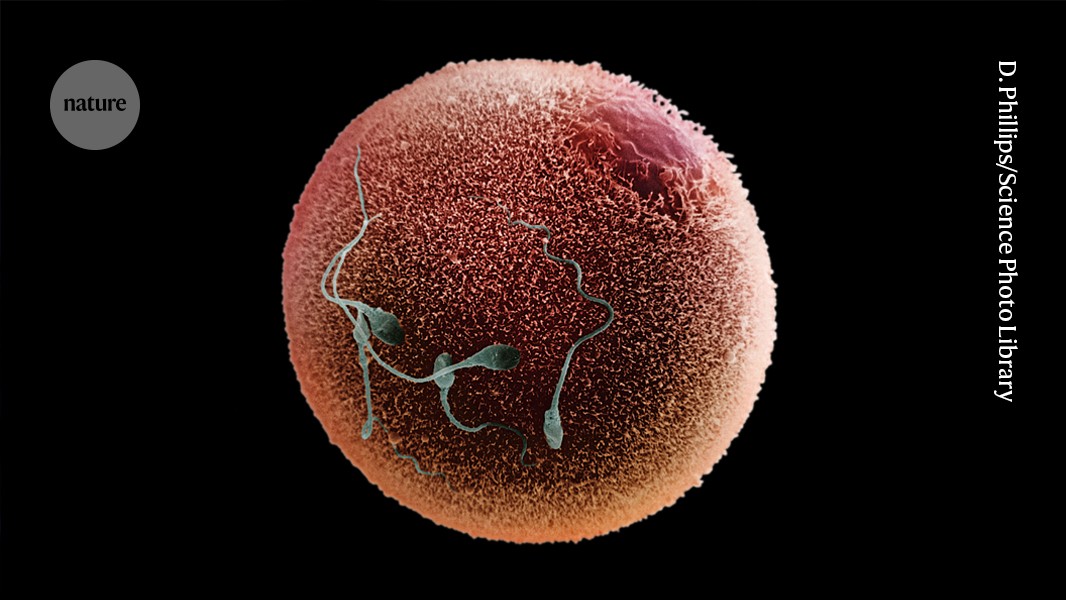AlphaFold predicted that three sperm proteins work together to form a complex. Two of these proteins were previously known to be important for fertility. Pauli and her colleagues then confirmed that the third is also critical for fertility in both zebrafish and mice, and that the three proteins interact with one another.
The team also found that, in zebrafish, the trio creates a place for an egg protein to bind, providing a mechanism by which the two cells could recognize one another. “It’s a way to say, ‘Sperm, you found an egg’ and ‘Egg, you found a sperm’,” says Andreas Blaha, a biochemist at the Research Institute of Molecular Pathology and co-author of the paper.
The findings might one day yield a way to screen people struggling with infertility, to find out whether problems with this complex could be the cause, says Wright.
And the results highlight a role for AlphaFold in studying fertilisation, he adds. “We’re limited in terms of experiments,” he says. “It might be that these modelling studies have an important role to play in the future.”
In other words, the team used AlphaFold to help with discovering a three-protein complex that allows sperm & egg to bind together. And this complex seems to be conserved between zebrafish and humans (!!). Despite the news title: this study is actually less about AlphaFold and more about using it to help do very important biochemistry
Original paper (open access): A conserved fertilization complex bridges sperm and egg in vertebrates. https://doi.org/10.1016/j.cell.2024.09.035



I’m not blaming, I don’t think the reporting is horny either. The concept is fascinating, if anything I’m horny for more of a middle ground between fluff and the original paper.